.
A Solstice Shift
Wow, who can believe it’s 1 July, with the year half gone already and the mid-year solstice just behind us? “I know”, rhetorical question, but I can assure you my head is spinning around, trying to figure out where that first half of the year has gone!
 |
| Winter |
I shall hope you’re
all in better case, but I suspect
quite a few folk ‘oot thar’ are feeling the same. J
Solstice, as Kim
reminded us in her recent post, is traditionally a time for reflection and
renewal, as well as for ringing in the changes. Getting into the solstice
spirit, I reflected on the Magic Systems
In Fantasy series to date. I have really enjoyed doing the six author
interviews, but I also realised that I haven’t really got to grips with the
series’ parallel focus:
.
“…the magic systems that have wowed me,
spinning my fantasy-reading wheels.”
 |
| Summer |
So I’ve decided to
dedicate the half year through to the next
solstice to looking at some of the works that fit the “wowed me” bill – so let’s
get those wheels spinning.
The Magic of Magic in Fantasy
Awa’ back on 1
January, I kicked off the series with a few thoughts on the role magic plays in
fantasy, including the observation that:
“From magic realism to the highest of high
epic fantasy, the magic – and by extension the magic system – is the leaven in
the mix.”
Today I’m going to
focus on three works that (between them) span the fantasy spectrum and where magic
is a distinctive element – and one that wowed me.
.
Chocolat by Joanne Harris
Chocolat sits at the magic realism end of the fantasy genre, i.e. it’s essentially a contemporary story but with a thread of magic running through it. In the case of Chocolat, I would say it’s a strong thread, with the magic of folklore and folk charms and carnival, and most particularly magic associated with chocolate and food, infusing the narrative. Most importantly (in terms of qualifying as fantasy), the magic is real, however subtly woven into the everyday.
 |
And yes, through many
rereadings the magic of Chocolat is
one that’s continued to wow me, in part because I’m a foodie, of course, but mostly
because of the way its presence in the story delivers delight, mystery, and
wonder.
.
A Shadow In Summer (The Long Price #1) by Daniel Abraham
A Shadow In Summer is one of those fantasies that almost defies categorization, although it’s clearly within the genre, i.e. the story is set in a secondary (alternate) world and magic is an important component of that world. The nature of the magic and how it is employed is also central to the series and each book, although on the surface, the stories may appear to be more about politics and intrigue, personalities and trade.
 |
But then, so is the
magic, which is essentially transactional in nature, but the transaction is not
consensual. The transactional mechanism is poetry, i.e. in order to control and
work the magic, one must have considerable poetic ability. Finally, the magic
is dangerous: that’s because it essentially involves enslaving and manipulating
beings from another realm, and if the poet loses control for an instant, all
can—and does—go badly awry.
In my view, the A Shadow In Summer magic system is
original, it’s intriguing – and yes, it definitely spun my fantasy-reading wheels.
.
The "The Wheel Of Time" Series by Robert Jordan
And so we come to epic fantasy – and at fourteen volumes, A Wheel Of Time definitely qualifies. From the series outset, which began with The Eye Of The World, the magic system was the aspect of the story that really wowed me. The system is so complex that I’m not even going to try and describe it comprehensively, but it’s definitely integral to the world and the story. The core of this system is the One Power, which women and men channel separately through saidar and saidin respectively (although saidin has become corrupted, nearly destroying the world), basically by manipulating the five elements of earth, water, fire, air, and spirit.
 |
There is also a
parallel reality called Ter’aran’rhiod, the Unseen World – but the aspect of the
magic system that I love the most are the artefacts of power called angreal, sa’angreal,
and ter’angreal. Each performs different functions, but broadly speaking they enhance
a magic user’s power, in some cases greatly. I have always found the way they work as artefacts
in their own right, as part of the overall magic system, and within the
mechanics of the story, both fascinating and impressive in terms of both magic systems and fantasy world building.
.
Conclusion
So there you are,
three very different stories and fantasy subgenres, and three equally amazing
magic systems – which I reckon is, well, sheer magic.
See you again next
month!
~*~
Previous Posts In The "Magic In Fantasy" Series:
January 1: Happy New Year – Ushering In A Year of Friends, Fellow Authors, & Magic Systems
January 5: An Interview with AK Wilder – Talking Magic In Her New-Out Crown Of Bones (AMASSIA #1)
February 1: An Interview with T Frohock – Talking Magic In A Song With Teeth & The LOS NEFILIM Series
March 1: An Interview with Courtney Schafer – Talking Magic In The "Shattered Sigil" Series
April 1: An Interview with Kristin Cashore –Talking Magic In Winterkeep & The "Graceling Realm" Series
May 1: An Interview With Lee Murray – Talking Magic, the Supernatural & Horror
June 1: An Interview With Amanda Arista – Talking Magic In the MERCI LANARD & DIARIES OF AN URBAN PANTHER Series
~*~
 About The Author:
About The Author:
Helen Lowe's first novel, Thornspell (Knopf), was published to critical praise in 2008. The second,The Heir of Night (The Wall Of Night Series, Book One) won the Gemmell Morningstar Award 2012, and the sequel, The Gathering Of The Lost, was shortlisted for the Gemmell Legend Award in 2013. Daughter Of Blood (Book Three), was published in 2016 and Helen is currently completing the final novel in the series. She posts regularly on her “…on Anything, Really” blog, monthly on the Supernatural Underground, and tweets @helenl0we

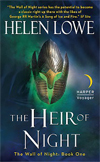
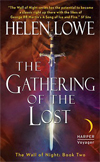
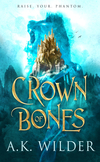
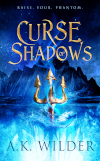
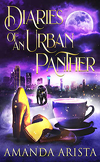
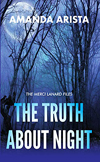

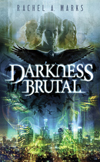
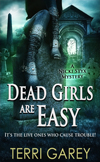
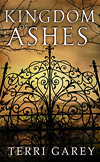
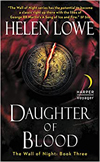
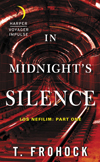

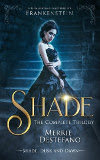

No comments:
Post a Comment